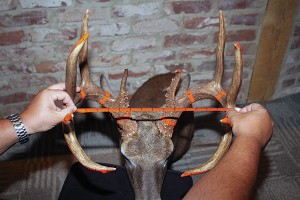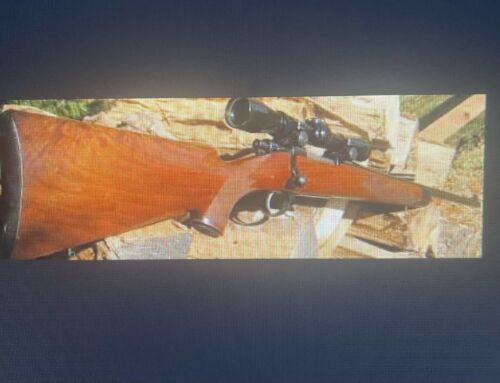 Print this page, tape it on the wall of your hunting room or camp and refer to it from time to time as you get ready to hit the woods. Tips from Boone and Crockett.
Print this page, tape it on the wall of your hunting room or camp and refer to it from time to time as you get ready to hit the woods. Tips from Boone and Crockett.
Main Beam Length
Main beams account for 30 percent of a rack’s score. The average Boone and Crockett-class buck has beams that average 25.63 inches. For field-judging purposes, it’s about 8 inches from a buck’s eye to the end of its nose, so look for main beams at least 3 times that long.
Mass
The second most important factor is mass. Circumference measurements taken between the burr and first point (G-1), and between other points along the main beam together provide nearly 18 percent of the score. To field-judge mass, consider that the circumference of a buck’s eye is about 4 inches. Antler mass measurements on a Boone and Crockett class buck average about 4 1/2 inches. So look for main beams thicker than the eyes, with that mass carried through the length of the beams.
Tine Length and Spread
Other important characteristics for score, and which account for 12 percent each, are inside spread and length of tines, especially the second and third points. The average Boone and Crockett buck has an inside spread of 19.75 inches. G-2 tines average 10 inches. In the woods, look for tall tines, the more the better.






What he said. LOL! Thanks BD. I love measuring bucks and seeing giants that others have killed. But, ultimately I don’t necessarily care if my buck scores X inches. (Sidenote: I do tend to agree with BD, however. How “high” will those back straps measure????)
With that said I long to shoot a giant buck that scores high in the record book. Not because I need to see my name in a book, but just because I think giant whitetail bucks are the coolest things on the great planet. Just saying…
Dean send me and email bi****************@*ol.com ( my spam account for such things) I will reply with an email or phone call
Know how I judge a buck? Will he be better as jerky or steak?